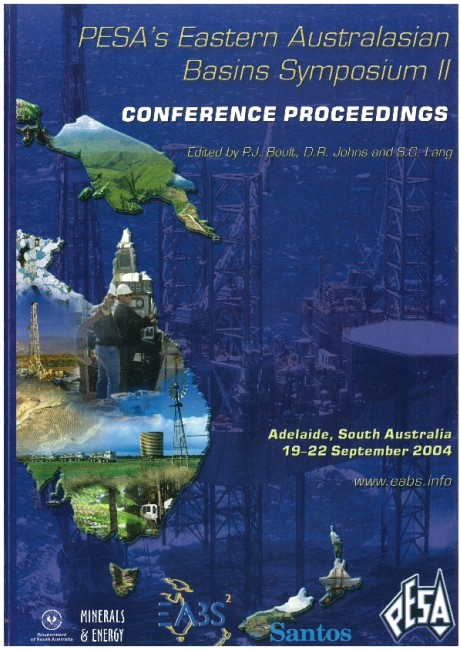Publication Name: PESA's Eastern Australasian Basin Symposium II
Authors: G.A. Boyd, M.W. Wallace, G.R. Holdgate and S.J. Gallagher
Date Published: December 2004
Number of Pages: 33
Reference Type: Book Section
Abstract:
The Nullawarre Greensand of the Late Cretaceous Sherbrook Group, Otway Basin, has an unusual diagenetic history that has produced significant volumes of early marine clay minerals. Together with glauconite grains, siderite, carbonate fluor-apatite cements, and pyrite, the Nullawarre Greensand also contains the Fe-rich green clay mineral berthierine. Berthierine is present as concentric lamellae on ooid grains, as early-zoned, isopachous, fibrous cement, and as laterstage, unzoned cement. XRD analysis reveals that the berthierine has a weakly interstratified structure with chamosite, and this is consistent with estimated maximum palaeotemperatures for the Nullawarre Greensand of between 68-85?C in the onshore Port Campbell Embayment region.Berthierine is the low-temperature precursor mineral to the iron-rich chlorite mineral chamosite, which is found to preserve porosity in high quality reservoir sands in the United States, off the coast of Norway, and in the North Perth Basin of Western Australia. Berthierine cements of the Nullawarre Greensand may have also preserved porosity by inhibiting the development of quartz overgrowths.
The presence of berthierine ooids and cements also provides evidence that the Nullawarre Greensand was deposited in a shallow, near coastal environment during a period of reduced clastic sediment influx. It can be classed, in part, an ooidal facies.


